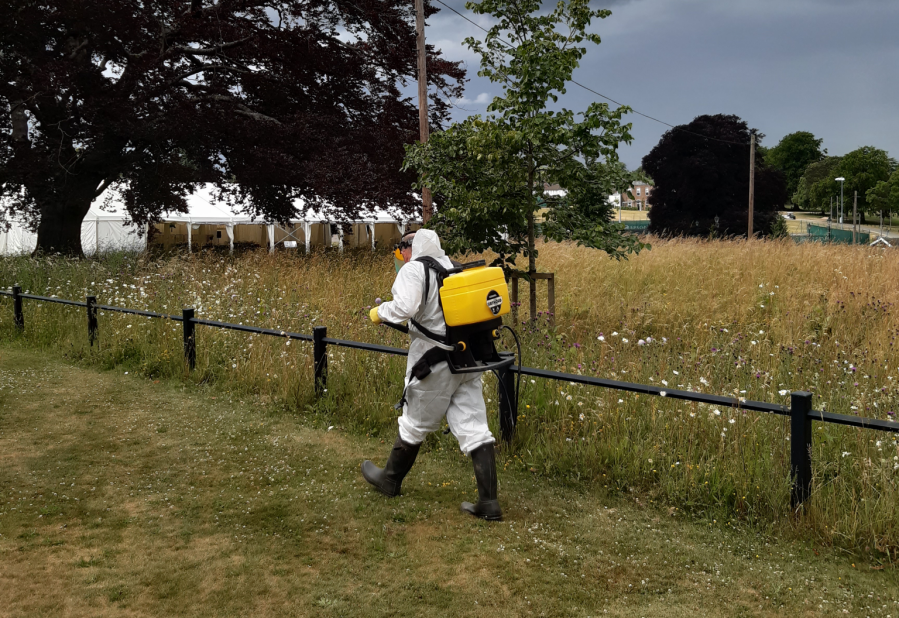Vineyard spraying mostly involves tractor-mounted application, but knapsacks have an important role to play in keeping estates weed-free.
Applying pesticides safely, accurately and effectively using hand-held equipment comes down to knowing some key operational points that include critical checks both before and after use, says Martin Sampson of Grounds Training, who delivers pesticides qualifications to the viticulture, amenity and grounds maintenance sectors.
Spraying hard standing surfaces, fence lines and building surrounds is very much knapsack domain in a March to October operational window when weeds are actively growing. Pre- and post-season checks are vital in keeping knapsacks primed for efficient application and operator safety, Martin states, as are regular inspections.
“Begin with a thorough examination of your equipment. Check for any visual damage to the tank or debris in the basket filter – and, really importantly, inspect the pencil filter in the lance to ensure constant flow. You’ll also need to look over the hose for any holes, and the seals for possible leakages or deterioration.
Then carry out a wet test to establish if there are any leaks or blockages in the system. Pour about two litres of water into your tank then do a dummy spray run with water, checking for any malfunction.”
Then check the trigger is functioning correctly, and that the appropriate nozzle has been fitted to give a good spray pattern. Even fan nozzles allow you to spray in narrow bands, while deflectors/anvil nozzles are more suitable for larger site applications. Ensure you have them the right way round.”
Next comes calibration. You’ll need to ascertain your walking speed, flow rate and spray width, which forms the basis of the calibration process,” he states.
It’s recommended that separate sprayers are used for different pesticides, eliminating the possible risk of applying an inappropriate treatment.
After you finish spraying, always clean kit thoroughly. It’s all part of applying the tender loving care that prolongs its life. Think of it like making a cup of tea. You drink up then wash your cup – same with knapsacks.
At the end of the spraying season, run through all your pre-winter checks then add a few millilitres of antifreeze if sprayers are lying idle until spring. When the job’s done, lock knapsacks up in a secure location away from unqualified staff and out of direct sunlight.”
Martin owns several knapsacks that have stood the test of time. “My Cooper Pegler CP15, which I use for training, is eight years old now, while the Berthoud Vermorels are getting on too but still work fine. I have to replace a seal occasionally through wear and tear, but that’s about it.”
Ending on operator safety, Martin stresses the importance of adjustable shoulder, chest and waist straps to ensure the knapsack sits comfortably, whatever your body shape.
“Whether you’re six foot plus, broad-beamed or 5ft 2in as I am, operator comfort is key to minimising mechanical stresses on the body,” he concludes.




